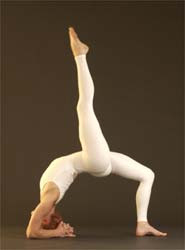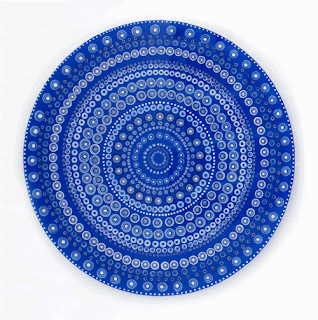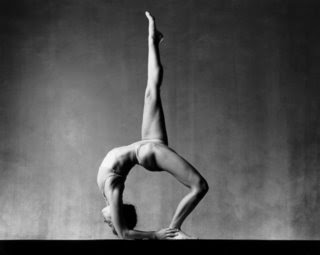Although last Tuesday's Yoga on the Great Lawn event in NYC was sadly rained out, it's nonetheless produced a fascinating - and I think really valuable - discussion in the print media and blogosphere concerning the relationship between yoga and corporate capitalism in America.
 For those who missed it, this was designed to be a Guinness Book of World Records-worthy largest-yoga-class-in-the-world-ever event. And even though it had to be canceled after 10 minutes due to a rain storm, it met this goal, with 9,000 of the 13,000 people who had signed up attending.
For those who missed it, this was designed to be a Guinness Book of World Records-worthy largest-yoga-class-in-the-world-ever event. And even though it had to be canceled after 10 minutes due to a rain storm, it met this goal, with 9,000 of the 13,000 people who had signed up attending.
The brief opening/closing ceremony was led by Elena Brower, a NYC-based Anusara teacher with a large and devoted following. Elena gracefully made the best out of a difficult situation, leading the class through a VERY brief practice before wrapping it up and promising to meet again soon.
Later, however, she caught some flak for her breezy dismissal of critics who objected to the heavy corporate sponsorship of the event, telling the New York Times that "the notion that capitalism and yoga are in conflict is old think."
Well, wait a minute. You don't have to be a "yoga traditionalist" - or even a never-say-die-Marxist - to feel that the issues involved merit more in-depth discussion than that.
While I don't want to pick on Ms. Brower - undoubtedly she has more sophisticated reasons for her decisions regarding corporate sponsorship than came across here - her "old think" quote does encapsulate a stick-your-head-in-the-sand, "it's all good" mentality that I find all-too-common in the yoga community.
While it may seem mean to further rain on the parade of the Great Lawn event, some important questions have been raised about the nature of its corporate sponsorship:
- Adidas, who sponsors Elena Brower as a product "Ambassador" and outfitted several other high-profile teachers at the event, is under fire for using kangaroo leather in their shoes. Not only is the kangaroo industry reportedly inhumane, but the leather's considered unnecessary to make their product.
- All 9,000 Great Lawn attendees were apparently offered free "Jet Blue" sponsored yoga mats, SmartWater bottles, and goodie bags. At this point, I think almost everyone knows that plastic water bottles in particular are bad for our health and horrible for the environment.
And the biggest issue: what kind of culture is being created when the world's largest yoga gathering seems to be about nothing more than feeling good and having a nice time? posted a penetrating critique on his Facebook page that deserves to be quoted in full:
It was exciting that 9,000 people gathered in Central Park to practice yoga and I have been waiting for an event like this for some time. But it my opinion the event was sadly squandered. All the media was there, CNN, the NY Times, everybody – the cameras were pointing. For the first time in history the world put the microphone at the mouth of the larger yoga community in America. But what was the message given? We are celebrating the Solstice. We want more people to practice yoga. That’s it? We have nothing more to say to the world but that in 2010? With the oil gusher reminding us all that solar power is desperately needed, 9,000 people doing salutations to the sun could have brought the world an unforgettable visual and call to invest in a nonpolluting technology. And with hurricane season kicking up in the Gulf, we could have bought attention back to the people of Haiti. Let us come together again in mass. Soon. But next time let’s show what we stand for. And yes we can do it without corporate sponsors. Martin Luther King did.
In truth, I'm too jaded to hope that a yoga equivalent to the March on Washington will happen anytime soon. I believe that corporate underwriting will continue - and I'm comfortable with that up to a point. The views that it will help bring more people to yoga, that it's part of our society, and that it's not always necessarily such a bad thing all make sense to me.
BUT. Some lines do need to be drawn. The plastic water bottles, the kangaroos - when concrete objections to particular corporate practices come up, they deserve to be taken VERY seriously. If the yoga community is to be involved with corporate America - and I agree, it's a done deal, like it or not - the ethical dimensions of each exchange need to be carefully considered.
"Om"-ing to heal the oil spill just doesn't cut it when you're simultaneously distributing thousands of plastic water bottles whose production eats up 47 million gallons of oil a year.










